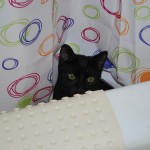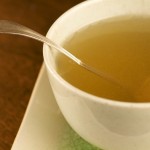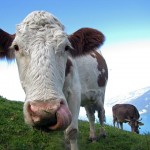Show Off Your Pearly Whites
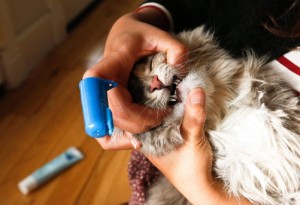
One of the benefits of feeding your dog or cat a raw meaty bone and organ diet is clean, white teeth, healthy gums, and sweet-smelling breath.
Yes, really!
Chomping down on raw bones is Nature’s toothbrush. It scrapes off plaque and tartar, strengthens the jaw muscles, stimulates the stomach enzymes for better digestion, and it’s a mental stimulus too. It makes your pet feel like a little tiger or a wolf. Also, the naturally occurring enzymes in raw bones help to eliminate food buildup and create an acidic environment that is naturally repellent to gingival bacteria. And without the nasty tartar on their teeth, there’s no bacteria and now there’s no halitosis. Plus, swallowing all those bacteria may get into the lymph and blood system and could damage the kidney or heart, and we don’t want that to happen.
A recent study showed that by giving your dog raw bovine bones as a chewing “toy” can reduce dental calculus. At the start of the study, dental calculus covered 42% of the teeth. They found that after 3 days of chewing on the raw bones the calculus was reduced by 27%. But after 12 days, the dental calculus was reduced by 70%. So, quite a significant reduction of dental disease can be achieved just by chewing on a raw bovine meaty bone (see Study).
Raw Bones Are Safe
Some folks, including veterinarians, will tell you not to give your dog or cat bones because they could choke on them. Well, maybe cooked bones. Heat changes the molecular structure of the bone and makes them hard and brittle. Raw bones are softer and more pliable. Test it yourself. Put a cooked chicken bone next to a raw chicken bone. Look at the difference. Try to bend the cooked bone. Now, bend the raw bone. The cooked bone will not bend, it’ll snap in half and you’ll see ragged edges. The raw bone is more pliable, softer, and it’ll bend.
But, won’t bones break their teeth? Very rarely, that’s just a scare tactic to steer folks away from raw feeding. However, sometimes premolar and molar teeth split when dogs gnaw “recreational” bones aka large beef marrow bones. Your dog chewing on tennis balls will do more damage as it may expose the pulp cavity. But If you’re scared that meaty bones will damage your pets teeth, don’t be, relax, and don’t feed your dog or cat big knobby knuckle-bones. My cats always leave those thick bones behind anyway. I like to trust their instinct.
My Siamese cat was 6 years old when I switched her to a raw meaty bone diet. Not exactly a kitten. She’d been finicky all her life and I thought I’d have a problem switching her to such a radically different diet. But to my delight, she loved it!
But I had one problem. After 6 years of eating a commercial canned/kibble diet she had a bad case of tartar on her molars. It was so bad it looked like barnacles! What to do? So, before deciding to visit the vet for a teeth cleaning, I first thought I’d try to clean her teeth naturally.
Diet Change Is The First Step
I made a lot of mistakes when I started my cat on a raw diet. And, that’s because in the beginning I didn’t have anyone to teach me. The first mistake I made was I fed my Siamese cat ground raw meat. No bones. No organ meat. Not exactly a well-rounded nutritional meal for a cat. Plus, some of those ground raw meat pet foods have added synthetic vitamins, which is something I don’t recommend. But, more importantly, ground raw meat pet foods aren’t going to clean her teeth! She needed to be eating raw bones. So, my next step was to switch her to meaty bones.
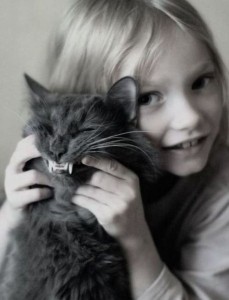
My cat freaked out. She’d never seen a bone before. She didn’t know what to do with it. After years of eating mushy food her jaws weren’t strong enough to bite down on them. And, I also suspected her teeth were sensitive due to a mild case of gingivitis.
A Word About Gingivitis
With gingivitis, you will see an inflammed, reddened line at the gingiva margin. There are 4 grades of gingivitis. Grade 1 is the mildest; grade 3 will have bleeding upon probing or touching the gum, and grade 4 will have bleeding without touching. It is a painful condition. But gingivitis is reversible if you catch it in time and that’s because you haven’t yet lost the ligament that keeps the tooth in the bone .
However, if gingivitis is left untreated it can progress to peridontal disease. The bacteria in the plaque that led to gingivitis in the first place will change from gram-positive to gram-negative bacteria. The gram-positive bacteria loves oxygen, but gram-negative bacteria thrives without oxygen and is more inflammatory. The gram-negative bacteria seeps inside the pocket of the gingiva, destroys the soft tissue which causes the gums to recede, eats into the alveolar bone, and this leads to tooth loss. Unfortunately, it is not reversible.
Kibbles Is Bad For Teeth
No, folks, kibbles don’t clean teeth. And there are some people, including some veterinarians, who actually believe kibbles and milk bones clean cats/dogs teeth. That’s equivalent to your dentist giving you a toothbrush-shaped cookie and then say “Clean your teeth with this.” Would you do it? Hell no! You brush, floss, and water-pick. All a cookie is going to do is cover your teeth with an invisible film of saliva and food (plaque) that attracts bacteria. All it takes is 12 hours for plaque to harden into tartar. Same thing with our pets.
What kind of food is more likely to cause plaque? It’s carbohydrates.
Carbohydrates Are The Culprits
Kibbles are very high in carbohydrates…anywhere from 30% to 60%. Some studies have shown that pathogenic bacteria thrive in a carborhydrate-rich environment, like, in the mouth. A study in Australia showed that dental health declined in just 17 days after switching from a raw diet to a kibble diet in dogs. Another study showed higher dental disease in cats fed a dry food diet versus feral cats eating a (raw) diet in the wild.
In a 2019 study, researchers found that eating carbohydrates resulted in reduced alveolor bone height in the jaws of mice, but dietary protein had no effect (see Study). The study went on to say:
Whether carbohydrate came from sugar or starch did not influence the extent of alveolar bone height. In summary, the amount of carbohydrate in the diet modulated periodontitis-associated alveolar bone height independent of the source of carbohydrates.
UPDATE: A July 2025 peer-reviewed veterinary study found dogs fed ultra-processed diets, like kibbles, had a significantly higher risk of developing dental calculus (tartar). In contrast, dogs fed more minimally processed, fresher foods had a much lower risk.
The research also found puppies that were fed a fresh food diet during the weaning period, puppyhood, and adolescence, which would be from the age of 1 month to 1.5 years old had a significantly lower risk of developing dental calculus later in life. However, puppies that were fed ultra-processed carbohydrate based diet during the same age period (weaning, puppyhood, and adolescence) had a significantly higher risk of dental calculus in adulthood. See STUDY.
Can Homeopathy Help With Tartar?
While I worked on my cat’s bone-eating phobia problem, I tried to remove the tartar by brushing her teeth every night with non-fluoride pet toothpaste and a baby toothbrush. That wasn’t working. Nothing was getting those barnacles off.
Next, I looked to homeopathy to see if I could find a remedy. And I found Fragaria Vesca. I gave my Siamese a low potency (6C) at infrequent dosages. In homeopathy, after you give a remedy you watch and wait for healing. This way, you’ll know whether you have given the correct remedy or dosage. So, I waited a few hours and then I took a look in her mouth. Wow! All her barnacles were gone…in a few hours, I’m not kidding. I love homeopathy!
Now that her teeth are cleaner and the gums are healing those raw meaty bones are no longer scary-looking and she’s happy to chomp away. Yipee!
Raw Bones And Teeth
I was luckier with my 4 year old Burmese. I have been feeding him a raw diet since kittenhood. He eats his meaty bones like potato chips crunch-crunch and has white clean choppers, pink pretty gums, and sweet-smelling breath (he could yawn in your face and you won’t smell anything).
There are some folks who believe cats have not evolved to eat bones. That their teeth are different than dogs. I say “nonsense!” Dogs and cats both have the same carnivorous dentitions. Adult cats have 30 teeth, and dogs with their longer snouts, have 42 teeth (in breeds of dogs with pushed in faces, like pugs, their teeth will be more crowded than longer-snout dogs. Therefore, extra care should be given to prevent dental issues). The carnivore’s teeth are pointy and sharp and are designed to rip and tear. Dogs and cats jaws go up and down like an alligator that cut flesh like a pair of scissors, as opposed to omnivore-animals that have jaws that go side-to-side with flat molars to grind food. When a cat attacks, it will use its claws to hold the prey while its sharp canine teeth puncture the skin. When a dog attacks, it uses the canine teeth to rip the flesh.
“Researchers studied a group of beagles that, over a period of months, suffered from a progressive accumulation of dental tartar and simultaneously lost the ability to detect odors. The dogs’ teeth were cleaned and within one day their odor detecting abilities returned to normal. Imagine the consequences if a junk-food fed K-9 dog, its teeth encrusted with tartar, failed to detect a terrorist bomb.” ~ Dr. Tom Lonsdale, “Work Wonders,” page 94.
Now, there’s an “art” in feeding raw food to your pet. You have to know the right ratio to bones, to meat, to organs. Animals in the wild consume the right ratio because their prey animal contain the right ratio. But, since your domesticated cat or dog is dependent on you to feed them correctly you’ll need to know the right ratio, too. Too much bone may cause constipation. Yet, too little bone may cause soft dark stools. Too much organ meat may cause loose stools, especially liver. So make sure liver only makes up 3% to 5% of organ meats
Bones Are Nature’s Toothbrush
The purpose of eating bones is to clean the teeth. Yes, it’s an important source of calcium for the growing bones in puppies and kittens. But, once an adult, too much calcium is actually bad for us and our carnivore pets. It’s the nutrients Vitamin K2, Vitamin D3, and Vitamin A, and few minerals that keep our bones and teeth healthy. Therefore, I don’t suggest feeding raw bones every day, but maybe two times a week.
So, what can you do? Well, that’s why I’m here. There’s a lot more to discuss, more than I can fit in a blog. So, if you’re interested in feeding a balanced raw diet to your dog or cat and you’re not sure how to begin, please contact me for a consultation.
NOTE: If your dog or cat is still afraid to eat bones, please do not feed Bone Meal. The bovine bones used to make most bone meal come from farm-factory animals that have been found to contain high-levels of fluoride. See article HERE. Instead, I recommend powdered egg shells, such as, EggShellent Calcium.




